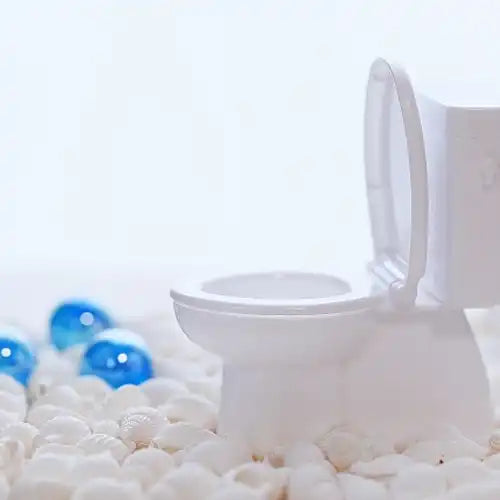
· By YamamotoChika
Everything you need to know about Japanese toilets for maximum comfort
Modern Japanese toilets incorporate unique innovations, so it’s no surprise that toilets are one thing that frequently amaze visitors. Some even go to consumer electronics retailers to purchase washlet attachments to take home as souvenirs from their trips. Why do visitors like them so much? Here are seven unique aspects of Japanese toilets to consider.

(The glass of the outer walls of the public bathroom in Yoyogi Fukamachi Mini Park becomes opaque when the lock is closed. Photo : The Tokyo Toilet Project)
1. Classic Japanese toilets:
High-tech, sit-down toilets were not always common in Japan. If you find oblong ceramic fixtures built into the floor, they're old-fashionedJapanese-style squat toilets. Use them facing the raised ends or check nearby stalls for western-style toilets with seats.
2. Clean, clean, clean!
While visitors may think Japanese cities are clean, in many cases, toilets are kept especially clean. Public restrooms are usually clean too and often include areas to wash your hands within stalls. Sometimes there are even disinfectant dispensers and pre-cut paper sheets to put on toilet seats before use.
3. The latest technologies:
In addition to heated seats, you can find functions such as heated bidets, air drying, and odor removal. Modern toilets are loaded with amenities to keep you clean and comfortable.
4. Noise masking:
Privacy in bathrooms is something Japanese care about, too. So if you find a sound button or hear a mechanical sound of water flushing right away, they are add-ons that people use so others will not hear you in adjacent stalls.
5. High-quality toilet paper:
A lot of toilet paper in Japan is double-ply and soft to the touch. There most likely will be paper towels or wall-mounted dryers for your hands as well.
6. Routine cleaning:
Japanese are taught to leave areas clean after use, for example, by giving countertops quick wipes with used paper towel before tossing it. Of course there are exceptions, but in general, with routine cleaning and the professionalism of janitorial staff, toilets are generally quite clean.
7. Barrier-free structures:
Many bathrooms in Japan are set up for wheelchair and elderly access. Accessibility features such as handrails and wide doors are becoming more common for both public and private bathrooms.
Japanese bathrooms and toilets, from both technical and thoughtfulness standpoints, are top-class. Though they're certainly not the easiest places to take photos, you’ll undoubtedly be using them when visiting Japan. Maybe in a hotel room or somewhere else you feel comfortable, take some time and check out their features.